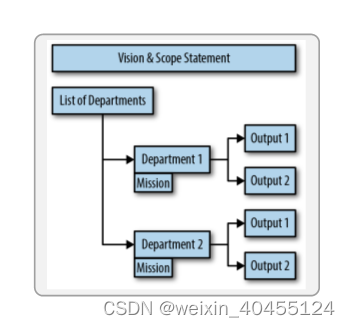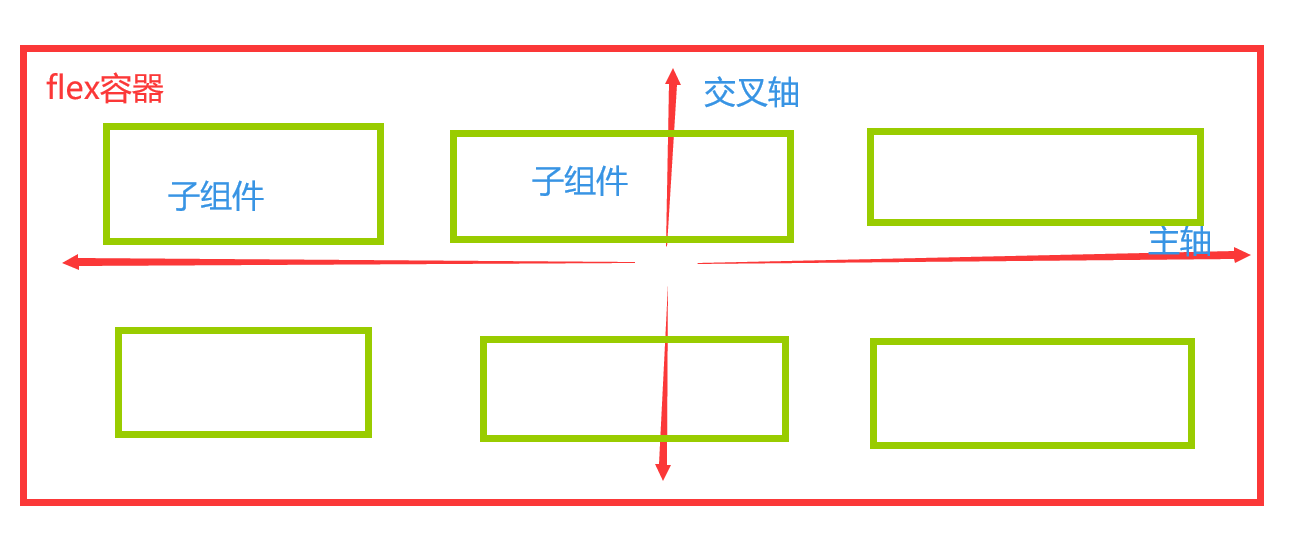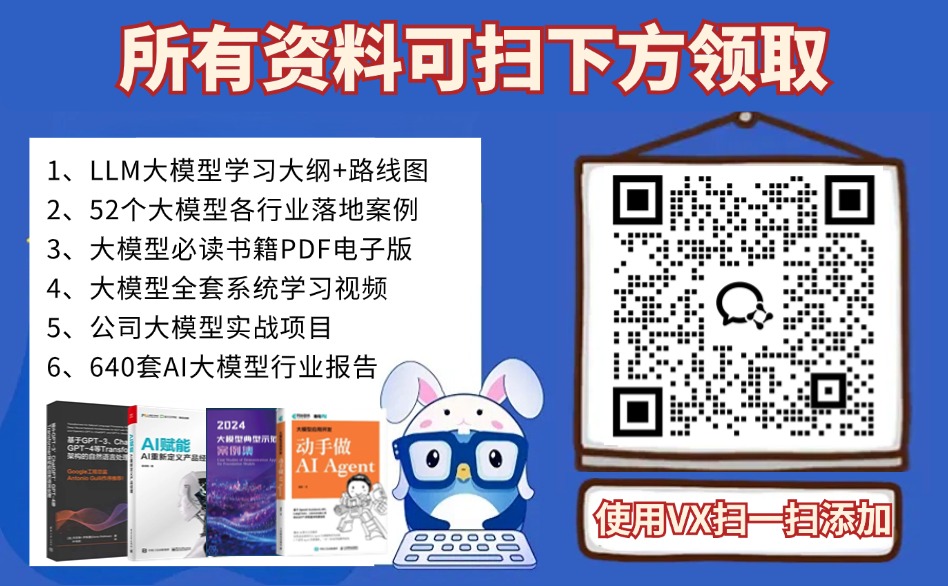本文主要是介绍Technology Strategy Patterns 学习笔记6-Communicating the Strategy-Approach Patterns,希望对大家解决编程问题提供一定的参考价值,需要的开发者们随着小编来一起学习吧!
1 30-Second Answer
1.1 类似麦肯锡电梯谈话
- Map an outline of three bullet points in your head, and then give the executives the simple, declarative, definitive answer
- Add your three reasons or characterizations with your three bullet points also as high-level declarative statements.
- single slide, with one headline that is your answer, and three
supporting points written in big, 30-point font.
- single slide, with one headline that is your answer, and three
- Stop talking and let the executive proceed. They will either
make a decision, or follow up on the points they are interested
in if they want more information.
1.2 Secrets
- Here’s a secret: nobody knows what to do
- Here’s another secret. Because in this short time that the boss is trying to listen to you, and she needs to know the answer
1.3 The boss almost always wants to know one of these things: - What is the project status?
- Do they need to do anything to help, or has the team got it?
- What is your recommendation on a particular proposed action?
2 Rented Brain
2.1 Strategy consultants are sometimes called “Rented Brains.”
2.2 雇佣战略顾问的原因
- It shows mismanagement on the part of the executive who hires them, because it means he has not built his own leadership team
- Even if the first is false:he does not trust his team to be objective and give him the hard facts. He has built a team of sycophants, yes-men, wishy-washies with no point of view at best
- The first job of a consultant is to get the next job. They make recommendations solving one problem in a way that creates a new, bigger problem requiring more time and fees to help solve.
2.3 principle
- Every day when you go into work, pretend you don’t work at your company
- Pretend you are a hired consultant, a Rented Brain, who is absolutely comfortable telling the bad news, making the hard call, saying what truly needs to be said, exposing the elephant in the room
- Act as if you were a consultant who was not only free, but actually required to say what needed to be said,
- Put a simpler way: speak truth to power
3 Ars Rhetorica-逻辑
3.1 向领导推荐架构及获取资源、得到approve的方法:
- 弄清楚你想要什么(这是本书的第一部分)
- 然后学习如何请求(这就是这部分)。
3.2 亚里士多德说服三要素
- Logical arguments (logos) 逻辑论证
逻辑证明:诉诸理性,分析获取用户信任的原因 - Ethical arguments (ethos)
信誉证明:即和我说话的人是谁,他的身份、他的品德是什么样的 - Emotional arguments (pathos)情感
情感证明:诉诸感性,抓住人们的情绪 - 参考URL : https://www.jianshu.com/p/cd27de35b715
3.3 进行逻辑争论,需要以图表、数据等各种形式包括以下内容
- 使用归纳推理和演绎推理、三段论
- 陈述你的假设及其理由
- 陈述证明你的假设的方法
- 说明您将用来衡量进度的指标以及如何获取这些指标
- 概率和范围、可信度
3.4 Logical Fallacies-逻辑谬论
3.4.1 参考
- https://zhuanlan.zhihu.com/p/71044474
- https://zhuanlan.zhihu.com/p/96065351
- https://www.jianshu.com/p/6ca09261cdfe
3.4.2 诉诸人身(ad hominem)
指借由与当前论题无关之个人特质,如人格、动机、态度、地位、或处境等,作为驳斥对方或支持己方理据。诉诸人身又称作“对人不对事”
3.4.3 乞题谬误 (petitio principii)
如有人提出非不证自明的论点,却让它用自身证明自身,他就是预设原始论点,亦即乞题。
谬误例子:
- 德国人的民族性很严谨,所以德国人做的车一定质量很好。
- 西方人都很性开放,所以我和杰克相处也应该很开放
3.4.4 Affirming the consequent(肯定后项)
P可以推导出Q ,Q即后向,但Q确认了,不一定能推导出P
谬误例子:
- 老师:如果你要补考,你就一定要有医院证明。
- 学生:那好,那就是说,我有医院证明可以补考了。
3.4.5 Blind authority-崇拜权威
把一些权威的话当成真理,从而达到论证自己,但却没有什么逻辑关系。
3.4.6 Blinding with science
和blind authority 类似
3.4.7 Hasty Generalization(草率归纳)
轻率概括是在没有充分证据的情况下,做出具有一般性的结论
3.4.8 后此谬误 (post hoc ergo propter hoc)
仅仅因为一件事发生在另一件事之前,就想当然地认为前者是后者的原因
谬误例子
- 欧洲都是基督教国家,而且他们很富有。所以基督教就会带来富有
4 Fait Accompli-避免木已成舟
4.1 它指的是已经决定或发生的事情,在受影响的人有机会听到这件事之前或扭转它。-重大会议的事先沟通
4.2 Facing a Cold Audience
4.2.1 参与者可以接受变化,但
- people have only one question in their minds: What’s in it for me? They immediately start calculating.
- we would not be happy changing in any of those ways if someone else forced us to do it without asking us, without consulting us, or without recognizing that we have some vested(应得) interest.
4.2.2 mistake - 没有事先沟通
- we didn’t include the audience in our process, or at the least given them a heads up and taken some input
4.3 The Meeting Before
-
You have the meeting before the meeting, in a bunch of little meetings
-
You need to have the meeting with each of the key stakeholders,
individually, before the meeting。 -
HOW TO IMPLEMENT
-
- Look at your Stakeholder Matrix and RACI and make the list of whom to invite to the big proposal meeting.
-
- Determine the list of who the key stakeholders are—he people with the most clou- 通过influence和impact角度分析.
-
- Interview these people individually, tell them what you’re thinking,and ask if it makes sense to them,
-
- Then, like a salesperson, ask them bluntly(率直的)
-
- Go to your big meeting with the clearly stated agenda that you’re making your proposal or stating your new direction.
-
5 Dramatic Structure
5.1 清晰列对于每个stockholders,你希望他们做什么
5.2 Establish the Status Quo
5.3 Create an Inciting Incident
- We point out the areas of exposure, weakness, and vulnerability in security
- State clearly, with real data and projections, exactly what you expect to happen
- show what bad effects are in store for the business if you don’t act
- The effects are going to reduce to one of these
- •Our costs will go up, while our quality and availability go down.
- •We will be slower to market, and the competition will win.
- •We will lose this revenue opportunity.
- •We will lose these key customers.
- •We will lose these key employees.
注意,这个主要用于初始阶段,业务故事还很少
5.4 The Plan
- Show what changes you expect across people, process, and technology. Who will be involved, what work will they do, what processes need changing, what tech will you buy or learn or add to, and what is the future state architecture?
- Using Directional Costing show how much the plan will cost
5.5 Shock and Awe-震撼和敬畏
5.5.1 pain展现
- 展现出如此决定性的力量——由于不同意你的计划而带来的一系列痛苦的问题和糟糕的结果,以至于高管现在必须做出决定——他们显然会选择你的道路,因为你已经如此明确 收集了事实并经过深思熟虑,他们只是等不及你的计划了。
- 注意需要在最后展现
-
- 你对完成的定义:这是对所有这一切结束时世界是什么样子的具体陈述和清晰的看法,完成后(未来的状态)架构。
-
- 您将如何衡量成功、如何展示进展以及将使用的指标。
-
- 您将建立的结构,用于向由这些利益相关者组成的指导委员会报告这些指标和进展情况。 主管仍然掌握着控制权:她所要做的就是同意,一切都会好起来的。
-
6 Deconstruction
6.1 分析、解构你遇到的问题,不能仅仅解决表面(local)的问题
6.2 Three Levels of Problems
6.2.1 when you’re solving a problem, look at three things:
- The local problem
- The category that this problem is in, the set this is a member of
- The associations in which this problem arises in other contexts
6.2.2 if you have a scalability problem on this system, you have a scalability problem in general, and that solving the problem won’t solve the problem, and you’ll have it again
6.2.3 The problem of having the same repeated problem, which creates organizational inefficiency, is one thing the Deconstruction pattern addresses. It is the pattern for a different way to define our mental models.
6.3 Three Causes of Problems
- Lazy people
- People who are not lazy, but don’t think about how they think about their work
- A misunderstanding of semiotics
6.4 Another way of putting this to yourself is
- “rather than solving it, how do we just not have this problem?”
- “How can I work myself out of a job?”
6.5 Semiotics: Signs and Symbols
- you are creating a context in which other people can succeed.
6.6 Scopes Without Center
- Most of the people who will execute your plans do not report to you. As a strategist or architect, you must reach them by influence.
- You are adjacent to the big forces of development, product, strategy—but master of none.
6.7 The World as System: Synthetic Decomposition-合成分解
- It means that you do two “opposite” things at once
- You are combining and composing across disparate patterns that seem at odds.
- Frame of mind
-
- Discover and analyze the problems and opportunities about you. Decompose them into their more atomic constituent parts, determining correlations and causations.
-
- Hypothesize
- Catalog your hypotheses.
- Ask what broader context must exist in order for this circumstance to arise?
- Observe yourself as an observer in an act of metacognition and decompose your concepts. See them as signs with false signifiers.
- Synthesize to recombine the problems and opportunities from across different frames
- Develop a model taking all of that up, one that represents a new frame, a new context, in which the constituent parts are optimized for their metrics, simplified, reduced.
-
7 Scalable Business Machines
7.1 Business as System
7.1.1 Attributes we tend to design explicitly for as architects include
- Fitness to purpose
- Portability
- Scalability
- Extensibility
- Availability
- Monitorability
- Manageability
- Maintainability
- Resilience
- Security
- Auditability
- Performance
- Testability
- Elegance-优雅
7.1.2 principles in architecting and designing
- Hide details behind an interface.
- Apply the principle of least knowledge.
- Create a strong separation of concerns.
- Ensure loose coupling.
- Isolate what changes independently.
- Look for opportunities for reuse.
- Explicitly manage risk.
7.1.3 SOLID principles of object-oriented system design
- Single responsibility
- Open-closed :Things should be open for extension, but closed for modification.
- Liskov substitution principle :Objects of a derived class should always be substitutable for a parent class.
- Interface segregation
- Dependency inversion principle
参考URL :https://blog.csdn.net/rocketeerLi/article/details/81585705
7.2 The Origin Theory
7.3 Aspects of the Scalable Business Machine
7.3.1 示意图

7.3.2 Action
An action is one atomic activity or local work process performed within a single department in aid of producing a deliverable
types
- Create
- Approve
- Review
7.3.3 Tool
A tool is application or Software as a Service tool
7.3.4 Deliverable
A deliverable is a concrete document, created with a tool that has value to someone else outside the department or process in which it was created. One or more related actions work together to create a deliverable.
7.3.5 output
An output is a collection of one or more deliverables. Outputs are the stuff we produce, whether physical or virtual, whether a product or coherent service.
7.3.6 Outcome
The outcome is the difference your output makes to a customer.
Outcomes are the Why. They represent the benefits your customer gets.
7.3.7 Department
A department is a logical grouping of people who perform actions to create outputs of the same kind.
types
- Value creator
- Support
7.3.8 Business unit
The business unit owns a slate of product SKUs it sells to customers and owns a P&L(损益).
7.3.9 Company
A company is a legal fiction that has the status of a special person.
7.4 Executing
- Define vision and scope
- Define the departments and customer outcomes

- Define the activities and deliverables
- Define the customers
- Define the principles
- Define the outputs
- Assess the Value Chain
- Define the processes
- Define the tools
- Define the roles
- Define the metrics
- Create the templates
- Determine the hotspots
- Communicate the machines
- Manage the change
这篇关于Technology Strategy Patterns 学习笔记6-Communicating the Strategy-Approach Patterns的文章就介绍到这儿,希望我们推荐的文章对编程师们有所帮助!







